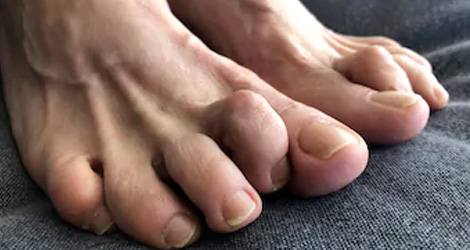
Hammertoe is a abnormal bending of one or both joints of the second, third, fourth or fifth toes. This is a result of an imbalance in the muscles that normally hold the toe straight and is usually triggered by the type of shoes being worn, a persons foot structure, trauma or even certain disease.
Hammertoes usually start out as a mild deformity but will get increasingly worse with time. In the earlier stages, hammertoes are flexible and can be managed with noninvasive measures. However if left untreated, hammertoes can become more rigid and will not respond to non-surgical treatment. Due to the progressive nature of this deformity, it should receive early intervention as it never gets better without some kind of treatment.
Unfortunately, if not caught early, surgery is often the best solution for hammertoe. However, if caught early enough, orthopedic inserts and orthopedic shoes can prevent it from getting worst especially in those cases where improper shoes is the trigger for the deformity.
Causes
- Muscle/tendon imbalance. The most common cause of hammertoe is a muscle/tendon imbalance. This imbalance, which leads to a bending of the toe, results from mechanical (structural) changes in the foot that occur over time in some people.
- Improper footwear. Hammertoes may be aggravated by shoes that don’t fit properly. A hammertoe may result if a toe is too long and is forced into a cramped position when a tight shoe is worn.
- Injury. Occasionally, hammertoe is the result of an earlier trauma to the toe.
- Heredity. In some people, hammertoes are inherited.
Treatments we provide
- Orthotic devices. A custom orthotic device placed in the shoe may help control the muscle/tendon imbalance.
- Changes in footwear. We provide or recommend comfortable shoes with a deep, roomy toe box and heels no higher than two inches. We discourage shoes with pointed toes, shoes that are too short, or shoes with high heels.


